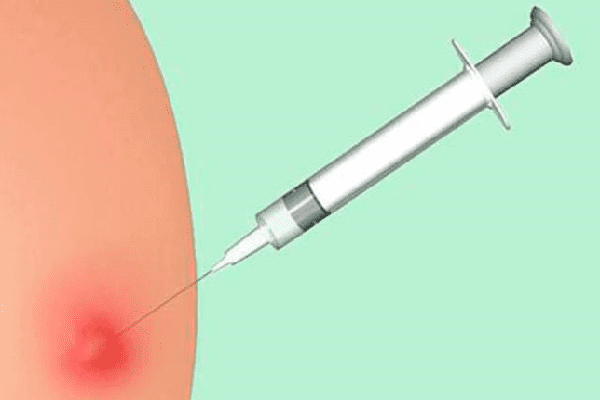Surgery diseases >>>> Signs of an abscess
Signs of an abscess.

Abscess Is a purulent - inflammatory process that develops in tissues, limited by a connective tissue membrane (capsule) that produces exudate. This feature distinguishes the abscess from other purulent - inflammatory formations. An abscess can be superficial, that is, it develops in the layer of subcutaneous fat, or deep, that is, it develops in the tissues of internal organs, muscle tissue, bone tissue, lymphoid tissue, in the tissue formed by nerve fibers, in the interstitial space. The impetus for the development of an abscess is given by pathogenic pyogenic microorganisms (streptococci, staphylococci, Pseudomonas aeruginosa, Escherichia coli, Clostridia, Proteus, mycobacteria, mixed microflora). An infection that causes an abscess can enter the body in two ways: exogenous (when a foreign body gets in, trauma, surgery) and endogenous.
The mechanism of abscess formation depends on the response of the immune system (innate and acquired immunity). Leukocytes rush to the places of accumulation of pathogenic microorganisms, which, having fulfilled their functions, die and form accumulations of pus. Pus gradually accumulates and moves away healthy tissues, expanding the boundaries of inflammation. Around the focus of purulent inflammation, a thin connective tissue (pyogenic membrane) gradually forms, delimiting healthy tissue from damaged, to prevent the spread of infection.

The abscess can self-resolve, and then the encapsulated contents are poured outside the shell created by the body. A breakthrough can be external (with a subcutaneous abscess, muscle, abscess of the mammary glands, etc.) or into the cavity of an organ (bladder, bronchi, stomach, kidney, intestine, etc.), or a closed cavity (sinuses, articular, pleural , abdominal). A breakthrough of an abscess can be dangerous, since sometimes the release of purulent contents outside the capsule leads to a diffuse purulent inflammation - phlegmon. A completely empty capsule collapses and fibrolizes, but if the contents of the capsule are not completely emptied, purulent inflammation can go from an acute form to a chronically flowing abscess.
The causes of an abscess lie in a generalized infection (chronic or acute) or associated with a specific injury (cut, puncture, compression, frostbite, fracture). An abscess can result from pneumonia, sinusitis, tonsillitis, stomach or intestinal ulcers, impaired blood circulation, endocrine disorders.
Abscess signs:
Local:
- Painful swelling,
- Redness of the tissue,
- The pain increases with pressure on the infected area,
- Softening of tissues at the site of inflammation.
General somatic:
- The general condition is disturbed,
- Elevated temperature,
- Headache,
- Symptoms of general intoxication of the body (nausea, vomiting, chills, diarrhea, dizziness),
- Pains of unknown etiology,
- Pain in muscles , joints, bones (with an abscess of bone, articular or muscle tissue).
Diagnosis of an abscess is carried out on the basis of a visual examination with symptoms of a local nature (visible), on the basis of radiography, ultrasound, puncture and culture of the contents, a blood test for leukocytes, ESR. With an abscess, the leukocyte formula shifts to the left, the ESR is increased.
Treatment of an abscess is carried out by surgical intervention (incision, or wide dissection), followed by drainage for the outflow of purulent contents, rinsing the cavity and treating it with antiseptics and proteolytic enzymes . To improve outflow, two incisions are sometimes made. There is the possibility of using an electric pump to quickly remove pus. If sepsis is suspected, large-scale antibiotic therapy, detoxification measures for the whole body, symptomatic therapy are performed. According to indications, blood or plasma transfusions are performed, immunostimulating therapy (including the use of sera ) is carried out .
A visible abscess can be treated with an antibiotic ointment or injected with an antibiotic directly at the site of the abscess. But the action of the antibiotic must be directed against certain identified microorganisms.
Do not open a "cold abscess" (asymptomatic) if you suspect a tuberculosis infection, so as not to provoke superinfection.
An abscess is dangerous with complications: purulent fusion of nearby tissues, necrosis of nerve fibers, a number of passing vessels, osteomyelitis, sepsis and death.

Read

Read



























